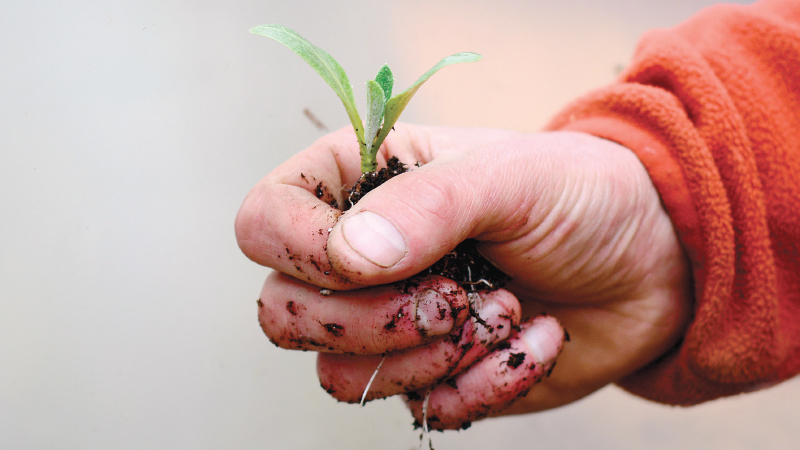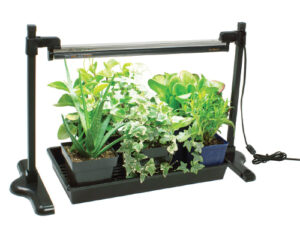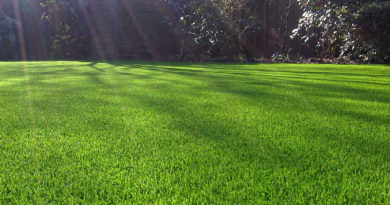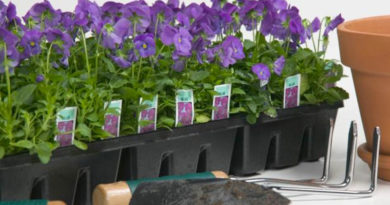Sowing Seeds
By Mark MacDonald
Getting a head start on spring, scores of farm crops have been cultivated for centuries through the annual and laborious practice of sowing seeds directly in the ground, watering them in, and waiting. The seedlings that emerge are thinned to the proper spacing, and after a predictable length of time, the mature crop is harvested and taken to market.
There are many crops for which direct seed sowing makes good sense. Root crops like carrots and beets simply don’t require any extra fuss to sprout and grow in the field or the home garden.
Yet other crops, by their nature, take longer to mature. The classic examples are peppers and tomatoes — both native to the tropics and intolerant of cold weather. Starting these crops from seed involves giving them the benefit of a head start by sowing them indoors in a temperature-controlled environment.
Think of this early period in a tomato plant’s life as being highly artificial. Select sterile, inert seed starting mix that is carefully formulated to retain moisture, yet drain away excess water. Then increase the soil temperature through the use of a seedling warmer for faster and more uniform germination.
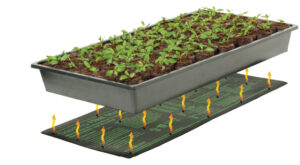
As soon as the seedlings sprout, the strategy changes and the objective is to slow everything down. Bottom heat will produce fast, leggy growth in seedlings, so remove the warmer and move the seedling tray into a space with good air circulation. This is the time to apply artificial light as well. Full spectrum T-5 fluorescent tubes, suspended just 10cm (4 inches) above the seedlings works well. This keeps the tiny plants very brightly lit, promoting compact, stocky growth, and good leaf colour.
Depending on spring weather, these seedlings may need to stay in this artificial indoor environment for eight weeks or more. The key time for transplanting tender seedlings outdoors is reached when night time temperatures are consistently above 10 C (50 F). Planting out before this time places unnecessary stress on seedlings, and can have a negative impact on overall plant health and harvest.
Seedlings do not benefit particularly from being large at transplanting time. And since many of us lack the space indoors to accommodate a lot of giant seedlings, it’s best not to fertilize seedlings until they actually go outdoors. Keeping them under intense lights until that time also helps to keep them stout and robust.
It is certainly possible to start sown seeds indoors without using artificial lights, but plants tend to become leggy and tall in these conditions as the stems stretch to reach a brighter source of light. It really is worth investing in some basic seed starting equipment to help produce strong transplants.
Vegetables to start indoors each spring include peppers, tomatoes, eggplants, melons, cucumbers, celery, leeks and onions. All of these crops benefit from an early seed-sowing start. When it’s time to transplant them into containers or into the garden, use a mixture of worm castings and a complete organic fertilizer 4-4-4 mixed into the soil beneath each transplant. The worm castings help reduce transplant shock, and the sudden flush of soil fertility produces rapid growth for a great early start to the season.
Perennial flowers also benefit from the same early indoor treatment. In the case of perennials, many will bloom in the first year if allowed an early start, including echinacea and rudbeckia. Strawberries will produce fruit in the first year if they are given a really early start in December or January.
Tender annual flowers need a head start as well. The shocking blue lobelia that are so familiar in window boxes and hanging baskets are native to sub-tropical Africa, and will quickly perish if transplanted when nights are still cold. It’s very simple to scatter their dust-like seeds on the surface of some pre-moistened seedling soil — and much cheaper than buying flat packs from the garden center. As an organic grower, you can take comfort in knowing that your seedlings have not been treated with pesticides or harsh chemical fertilizers.
Head-forming vegetables, from radicchio to pac choi, can all be direct sown in the garden with great success. Starting the seeds in trays, however, means that you can carefully control spacing in the row at transplant time. Even for lettuce you can use 72-cell planting trays with one seed per cell. One of the added benefits to this method is avoiding early damage to newly emerging seedlings from slugs, snails, and woodlice.
While there is no “correct” way to garden, there are some very useful tools available to assist with the process when starting from seed.
Top picks include:
- Sterilized seed starting soil
- Seedling trays
- Seedling warmer mats
- T-5 fluorescent lights
For a planting chart to assist you in starting seeds visit westcoastseeds.com. Gardening Guides have been adjusted for different Canadian growing regions based on average frost dates and frost-free days.
Mark Macdonald is West Coast Seeds’ staff writer and photographer. He has been growing food and flowers organically for over 20 years. West Coast Seeds specializes in untreated, non-gmo vegetable, herb, and flower seeds, and is certified organic by the Pacific Agricultural Certification Society (16-205). Be sure to visit westcoastseeds.com and request a free Gardening Guide.

